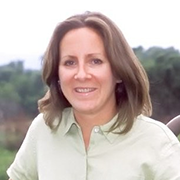A .gov website belongs to an official government organization in the United States.
A lock () or https:// means you've safely connected to the .gov website. Share sensitive information only on official, secure websites.

A variety of approaches have been used to investigate how wildland fires, both individually and as a population, respond to their environment, how fire behavior might differ in a changing climate, and how we might mitigate or shape these outcomes. Understanding and anticipating such responses have vast and expanding applications including fire management, land management, electric grid operations, insurance assessment, risk assessment, and community planning. No one approach answers all questions. Tools include statistical correlations and computational models ranging from sub-centimeter combustion fluid dynamics models to modules in general circulation models, designed to understand fire responses at different scales, with different levels of physics, and focus on individual vs. populations of fires. Reconciling and integrating conclusions from each is a community work in progress.
By linking fire behavior to its environment – both how it responds to the atmosphere, fuels, and topography and how its heat release alters the atmosphere – we have used case studies applying the CAWFE® coupled numerical weather prediction – wildland fire environment model to understand the unfolding of dozens of landscape-scale wildland fire events. Past research showed that by reproducing winds at hundreds of meter grid spacing and including the fire feedbacks on the weather, the distinguishing features of wildfire events could be reproduced – even recent outlier events – over a wide range of conditions. Here, we present recent work exploring fire behavior in understudied airflow regimes that are conducive to rapid fire spread in western U.S. fire events. Viewed from this physically-based modeling perspective, we can extract insight both into the mechanisms of why a fire behaved as it did and the relative important of broad factors (drought, fuel accumulation) speculated to be the cause, as well as what this means for assessing risk of similar events.
Dr. Janice Coen holds positions as Senior Research Scientist at the University of San Francisco and Project Scientist in the Mesoscale and Microscale Meteorology Laboratory at the National Center for Atmospheric Research. She received a B.S. in Engineering Physics from Grove City College and an M.S. and Ph.D. from the Department of Geophysical Sciences at the University of Chicago. She studies fire behavior and its interaction with weather using coupled weather-fire CFD models and flow analysis of high speed IR fire imagery. Her recent work investigated the mechanisms leading to extreme wildfire events, fine-scale wind extrema that lead to ignitions by the electric grid, and integration of coupled models with satellite active fire detection data to forecast the growth of landscape-scale wildfires.
ALL Seminar attendees agree not to cite, quote, copy, or distribute material presented without the explicit written consent of the seminar presenter. Any opinions expressed in this seminar are those of the speaker alone and do not necessarily reflect the opinions of NOAA or CSL.